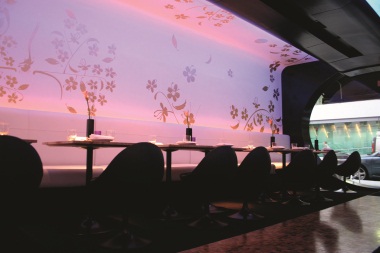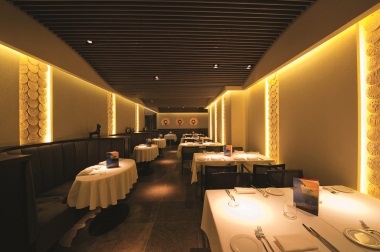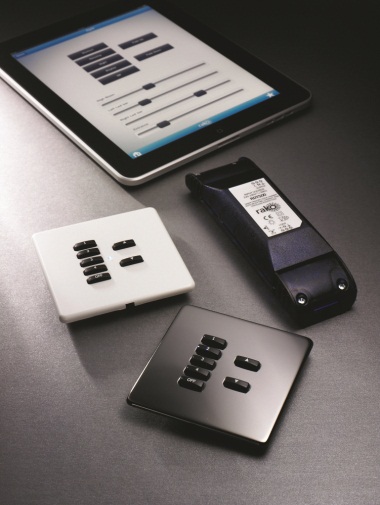The SLL thinks it is high time the industry had a reliable and unbiased guide to lighting controls and is calling?on your help to make such a document as comprehensive as possible. Andrew Brister reports on the likely?content for the guide and outlines exactly how the industry can get involved
DALI, DMX, 0–10V, leading edge, trailing edge… it's no?wonder that many people in the lighting world find?controls something of a black art. It's true that all the?different controls protocols, with differing wiring typographies,?can prove to be a minefield – wouldn't it be great if someone?came out with a practical guide to help steer practitioners?through treacherous ground??
Help is at hand in the form of a joint initiative from the Society?of Light and Lighting (SLL) and CIBSE's Electrical Services Group?(ESG). They have set up a task group to do exactly that and, while?the guide is still in its initial development stages, the industry can?expect the publication to arrive at some point in 2014.?

A la carte Restaurant lighting should to be easily controllable so staff can quickly select different settings appropriate for different times of the day. The Tsunami restaurant in London's West End has installed a Mode Lighting control system
What people want?
"There's currently no guide that is specifically dedicated to?lighting controls that people can refer to in order to get the?information they need," explains Catherine Gray, senior engineer?at WSP Group and chair of the task group. "Yes, there's lots of?information out there, but nothing that pulls it all together."?
So what can the industry expect to see in the guide? No doubt controls protocols will feature, as will potential pitfalls such as?dimming LEDs, but the group welcomes your suggestions (see?box, below). "Rather than going into this with a preconceived?notion of what needs to go into the guide," says Gray, "as task?group chair I'm going to be completely impartial and say: 'Let's do some research, let's gather some data, let's look at case studies.'?Then we can make a decision of how we should go forward and?make sure we are producing the guide that the industry needs."?
You can be sure of some strong opinions coming from the?task group. "At our first meeting, we brainstormed some of the potential content, such as cabling infrastructure, how big?should the cables be, what's the bending radius, is DALI or a?proprietary protocol better, how long can the cables be, what's a?Belden cable…" says deputy chair of the task group Paul Ruffles,?founder and principal of LD&T. "We want to produce one?guide so you don't have to go anywhere else."?

Dish of the day Quilon, the Michelin-starred Indian restaurant in London (above), was highly commended in the hotels and restaurants category of this year's Lighting Design Awards. Rako Controls' iPad, dimmer and panels (below)

Key requirements?
Task group member and sales manager at Rako Controls, Steve?Buckley, believes the guide also needs to fulfil another objective:?"It needs to raise the profile of the importance of lighting?controls. For a lot of applications, lighting controls are not?a luxury but a necessity. Given the need for energy saving in?today's buildings, lighting controls are a very important part?of the installation."?
While the guide will no doubt feature a lot of technical?information, human factors will feature strongly. Poor initial?design and/or final commissioning can often make users reject?a control regime, leading to the disuse or even sabotage of the?system or its components. There have been many reported cases?of users taping over sensors, jamming blinds or complaining so?much that the building manager simply turns a system off.?
"I like to keep things simple," says Catherine Gray. "It's so?easy, when you are engrossed in a project, to lose sight of the end?user. I always ask myself: 'If I was them, could I use this system?'?There's a line to be trod between creating a fantastic control?system that provides a good environment for the people working?in that space and it being simple enough to understand and use."?
The user interface components, such as push-button panels,?touch-screen panels and rotary controls, need to be designed?and positioned with the various users in mind. For instance, a?restaurant might have one or two identical, simple push-button?panels conveniently located to allow general staff to easily select?a standard lunch, dinner or event setting; a more sophisticated?password-protected touchscreen might be available for managers?to change those settings.
"Lighting controls have to be designed correctly or they?can be worse than useless," says Paul Ruffles. "If you've got a?system that is designed and installed properly and commissioned?correctly that's great, but you also need a building manager who?knows how to use it. If you've got a system that requires a laptop?to operate it and you can't find the scene you want, that can be?a pain. If the software is badly written, however wonderful your?DALI interface is, that's a poor system."?Thankfully, the industry does not have long to wait before?help arrives in the shape of a handy guide.?
Link in to the controls debate?
While the task group formed by the Society of Light and?Lighting (SLL) and CIBSE's Electrical Services Group (ESG)?will have strong opinions on what the key issues are?surrounding controls,Lighting would like the industry to join?the debate.?
Industry practitioners agree that control of LEDs is an issue.?"At the moment, everyone is struggling with LED technology,?particularly mains-dimmable LEDs and finding systems in?which components such as the controls, drivers and lamps all?work together to give a favourable result," says Chris Campbell?of Architainment.?
"Most lighting control systems are designed to control?lamps of some description but with the advent of digital?lighting, such as LEDs, they aren't lamps but little boxes of?electronics," points out Kevin Grant, group leader at Happold?Lighting. "It is more important than ever to ensure lighting?controls are compatible with the lighting system that is being?put in the building. Most lamps are either a conductive load?or a capacitive load, but an LED is sometimes conducting?and sometimes capacitive – this can really confuse lighting?control systems, sending mixed messages, which is why you get?problems like flickering or [the lamps] not switching on and off?when they should."?
Grant advises that protocols are another problem area.?"DALI has a lot of benefits but also a lot of drawbacks. I've?seen more issues with DALI than any other system. It's very?flexible, it's an open protocol and, as well as dimming, you?can do some very cool things with it. For example, you can get?feedback about burn times, energy use and projected life left?on a lamp, which is very useful for facilities management," he?explains.?
"However, a lot of these benefits depend on the system?being wired in a DAL addressable configuration. Very often?contractors get involved and the system gets wired as DALI?broadcast – a much more conventional way of wiring that?doesn't have the flexibility. So sometimes the system designed?is not the one installed and the client isn't getting the?functionality they expect."?





